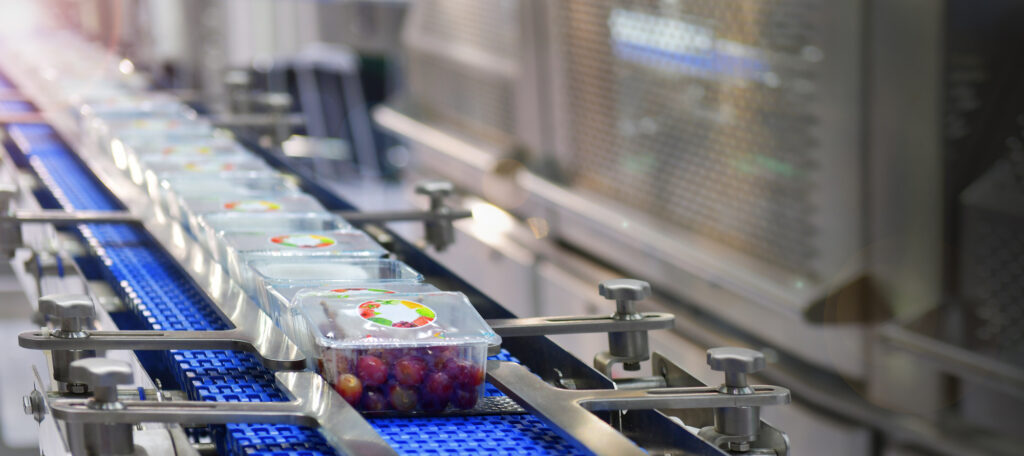Food packaging has undergone several major changes since it became a global industry.
First, glass jars allowed food to be preserved over the long winter months. Canning allowed food to be stored for even longer without risk of spoilage, and shipped over long distances. And the advent of single-use plastics in the 1960s and 1970s made transporting food lighter, cheaper, and faster than ever before.
Now, there is new demand for innovative forms of packaging that focus on the environment. Companies are shifting to recyclable or re-usable containers. And they are brainstorming even more futuristic solutions, such as edible membranes or containers made from plants and natural substances.
Read on to discover the future of food packaging. You may soon see these innovations on supermarket shelves near you.
Impact of Single-Use Plastics
Plastic packaging has been a boon for manufacturers. It created a cheap and disposable way to ship food from the packing plant to the grocery store. But their severe ecological cost has raised concern among consumers and activists.
Most plastic ends up in the ocean, where it can take hundreds of years to degrade. In the meantime, it can disrupt ecosystems, affect animal populations, and pollute pristine natural environments.
You can see this waste not only in grocery store products but in takeout and delivery of food.
Takeout and delivery services have been on the rise. This began because of conveniences such as delivery apps and online ordering. The COVID-19 pandemic caused these already rising numbers to increase more than 169%.
Takeout food creates much more waste than dining in. Kitchens can wash dishes and utensils again and again. Takeout containers go straight to the trash.
Meeting Consumer Demand for Sustainable Food Packaging
As the environmental toll of human output rises, consumers are becoming more eco-conscious. In one poll, 60% of North Americans said they would be willing to pay more for products they knew were less wasteful.
This presents a problem for food packagers. Plastic is an immense source of waste, but it prevents another immense source of waste – food spoilage. Foods wrapped in plastic take much longer to decay than other foods.
For this reason, you’ll see produce such as cucumbers and potatoes wrapped in plastic. Proper food storage increases yields, which are passed on to consumers in the form of cheaper food. It also avoids the waste of tons of food going bad before it ever has a chance to be sold.
So, customers and manufacturers find themselves at an impasse. It’s in the best interest of all parties to find the most environmentally friendly solution. But cutting back on plastics could mean more food spoilage and more expensive products.
This is where new trends in food packaging come in. From containers made of mycelium to reusable metal containers for restaurants, people around the world are brainstorming technology that will transform packaging as we know it.
Sustainable Solutions for Food Packaging
The most common recent solution is packaging made of recyclable and biodegradable material. This packaging is completely compostable and breaks down into soil along with used or spoiled food. It is usually made from sugarcane.
This process uses the sugarcane that has already been harvested. It grinds the leftover sugarcane into a paste which it then shapes into boxes, cups, or plates. The resulting products are microwave-safe and resist grease and water.
Other food packaging options involve using less plastic. Using less plastic results in savings for both the manufacturer and buyer.
Innovations such as vacuum packing are not only more eco-conscious, they are also safer for consumers. Vacuum-packed meat stays safe to eat for up to 5 times as long as meat that is wrapped in disposable plastic at the grocery store.
At the cutting edge of food technology, scientists are thinking of even less wasteful solutions. For example, some labs are testing water-soluble packaging made of flavorless, transparent film.
They use this material to package foods that go in hot water, such as pasta or instant coffee. It instantly dissolves in the water, creating a product that produces no waste whatsoever.
New Types of Food Packaging for Restaurants
To combat the problem of takeout waste, restaurants are also designing innovative new solutions to lessen their plastic use. Recently, plastic straws drew controversy because of their impact on the environment. They break down into harmful microplastics quickly and are difficult to recycle.
In response, several major restaurant chains redesigned their cold beverage containers. Their new containers no longer need plastic straws. The resulting lids are larger pieces of plastic that are more easily recycled.
Other businesses are experimenting with returnable takeout containers. Dispatch Goods, a company in San Francisco, has partnered with area restaurants to replace their takeout containers with metal ones.
Customers can arrange for the used containers to be picked up from their curb or deposit them in bins around the city. These containers can be used for years, saving thousands of single-use plastic containers from the landfill. Soon, similar innovations may arrive at the grocery store as well.
Build or Improve Your Food Packaging System Today
If you’re looking for a food packaging supplier with the latest food packaging advancements to handle your project, look no further.
Conveyors & Materials Handling, Inc has been serving the El Paso area and beyond since 1988. We supply packaging for every type of food. That means packaging for spices, dressings, snacks, produce, and more.
Contact us today to discuss your packaging needs or browse our other services on our website.
